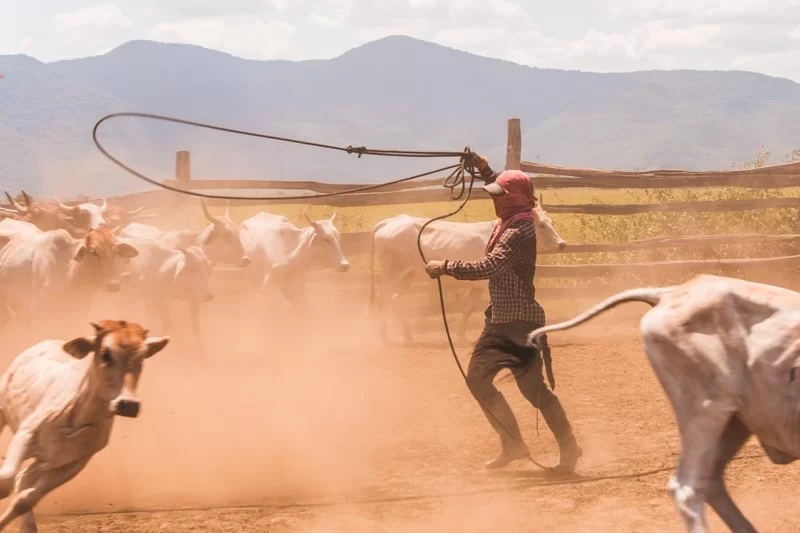Recently on a trip to Guyana, we stayed at Saddle Mountain Ranch near Lethem. We feasted our eyes on the glowing yellow savannah and at night we were spoiled by the sprawling night sky. It truly was a little piece of paradise.
We arrived the previous day and went on a short peaceful horse ride through the arid savannah that surrounded the ranch. When we arrived back to the ranch, the sun was setting and the horses basked in the soft golden light and got their well-deserved feed.
Joan and Tommy, the owners of the ranch, greeted us and told us that dinner was ready. It was simple, good Guyanan food. Rice, beans, plantains, and of course, a healthy portion of home-grown beef.


Our next day’s itinerary was laid out for us. Breakfast at first light, a slightly longer horse ride in the morning and the evening. Sandwiched between the leisurely rides, we were told that they had corralled the cows, and we would be lucky enough to see the branding of the 3-month old calves – an act that is enforced by the government to stop the theft of cattle in rural areas.
Probably one of the most unique things to do here in Guyana!
Table of Contents
ToggleBranding the herd
Try to imagine every wild west movie trope you’ve ever seen. The wooden corral, the cowboys whipping their lassos, the hats and bandanas, and the dust, oh the red, photogenic dust.Inside a corral is an intense place. The restless cattle are used to roaming for miles, going wherever, and eating whatever they please. They’re skittish, randomly breaking into a run, which causes the others to take part in a mini-stampede, only to have their movement cut short by the edge of the corral. There’s an excitement in the air. The Cowboys are waiting. This is the fun part. They’re going to be using skills that men have used on ranches for generations. They swing rough ropes that they’ve handmade from tanned cowhide over their heads and move towards the almost frenzied cows. Stood brazenly in the heart of the frantic corral stands Judah. He seems completely at ease with the chaos around him. Engulfed in the rising dust, he points out a calf that looks the right age for branding. He deftly swings his lasso over his head, walks towards the calf to isolate him from the herd. He throws the open lasso straight over the young calf’s head and pulls the noose tight. The calf panics and again has his attempts to escape thwarted by the edge of the corral. Judah pulls the rope around a post on the edge and ties it in. The others try to get another lasso around the calf’s back legs but after a few failed attempts, Judah takes matters into his own hands.
 Getting in close, he reaches over, grabs the young calf by the underbelly and the ear. He picks the calf up, turns him on his side and throws him down on the earth. With the calf momentarily winded, the others run in and hold him down. Once the back legs are secured with a rope they bring in the red-hot iron brands that have been heating up in a fire pit outside the corral. There’s a searing sound, some smoke, the calf kicks, and then the smell of burning hair. Once the brand has been applied, they take the ropes off. They count down “one, two, three” and release the calf together, springing away from the rising animal and up on to the corral fence to safety. The calf kicks himself to his feet and scampers back to the herd. Once standing, he is back resting easy as though nothing happened him. The ranchers look to lasso another calf. Life goes on.
Getting in close, he reaches over, grabs the young calf by the underbelly and the ear. He picks the calf up, turns him on his side and throws him down on the earth. With the calf momentarily winded, the others run in and hold him down. Once the back legs are secured with a rope they bring in the red-hot iron brands that have been heating up in a fire pit outside the corral. There’s a searing sound, some smoke, the calf kicks, and then the smell of burning hair. Once the brand has been applied, they take the ropes off. They count down “one, two, three” and release the calf together, springing away from the rising animal and up on to the corral fence to safety. The calf kicks himself to his feet and scampers back to the herd. Once standing, he is back resting easy as though nothing happened him. The ranchers look to lasso another calf. Life goes on.

Is branding cows in Guyana ethical?
This wasn’t a show, this wasn’t for our benefit as tourists, this was the way of life on the ranch. In the western world, branding is mainly a thing of the past. Electronic tags, RFID codes, and individual registration numbers are seen as less cruel and more efficient ways to track livestock. I asked Tommy about ear tags and why he doesn’t use them. His answer was simply a laugh. “Where do I get the tags from?” Guyana is a remote country, and Saddle Mountain Ranch is in one of the most remote areas of the country. It’s hidden deep in the Rupununi Savannah, 80km from the nearest town of Lethem with a population of just over 1000 people. At the ranch, they rarely go into Lethem; 80km in Guyana is a considerable distance along mainly dirt roads. In Lethem, there’s an airstrip with infrequent flights to Georgetown on the coast, where tags would have to be imported.For a remote area with little to no connectivity to the outside world, the ordering and shipping of these tags is not just difficult, it’s prohibitively expensive. Hypothetically if the tags could be acquired by the ranch. The only electricity is from a fuel generator that is turned on in the evenings for a few hours. This isn’t from any kind of cost-cutting measures, but rather the scarcity of fuel. It doesn’t take a genius to realise that the scanning and management of electric tags mean using computers and scanners, all of which need electricity. In an environment where nothing is wasted, why would you spend money on all this equipment when a brand and a fire will do? The beef we ate for dinner the night before was raised on the farm. Energy is at a premium when you live and work in a remote area.

Cattle Rustling in Guyana
Ok so electronic tags are out of the question for now unless infrastructure drastically improves to bring electricity to this remote ranch. What about standard ear tags? These are tags that are attached in a similar way to earrings. A short, quick clip and the cow has a number and can be identified. They’re often bright yellow with large, black numbers on them to help with visibility. These ear tags are widely used, are cheap, and easy to attach. They’re often used alongside electric tags to speed up production. This works really well when you have livestock in fenced-in fields, and unless an intrepid animal breaks through a fence, farmers can see their livestock easily. In a place where the dry season lasts for months, grazing can become difficult. Small fields would quickly be completely decimated by the hungry cows, leaving the landscape barren and bare. Instead, the cattle are allowed to roam for miles and miles, spreading out their grazing over a huge area.This means that keeping track of all cattle is difficult, and those easy clip-on tags can easily be cut off. A brand is a permanent mark and it works to protect the ownership, and thus the livelihood of the rancher.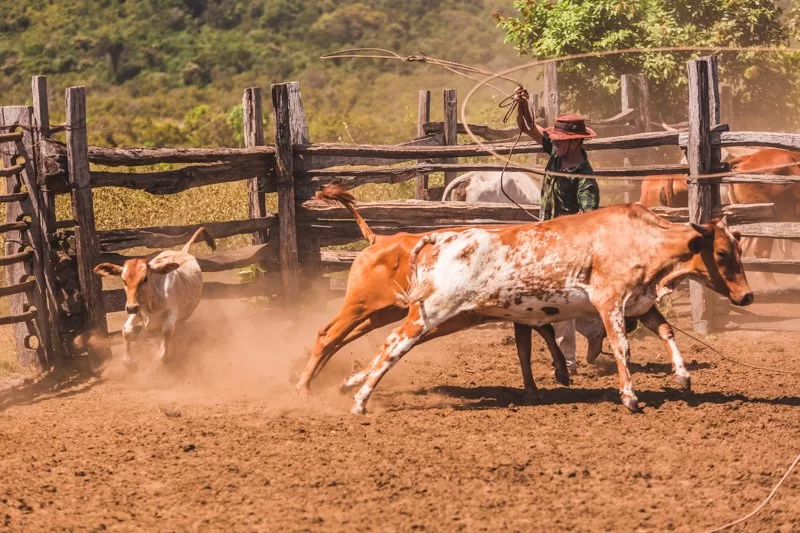
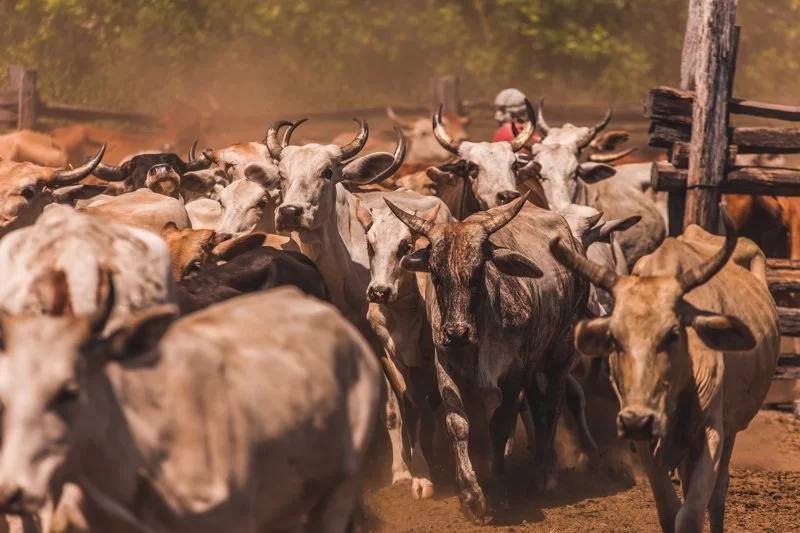
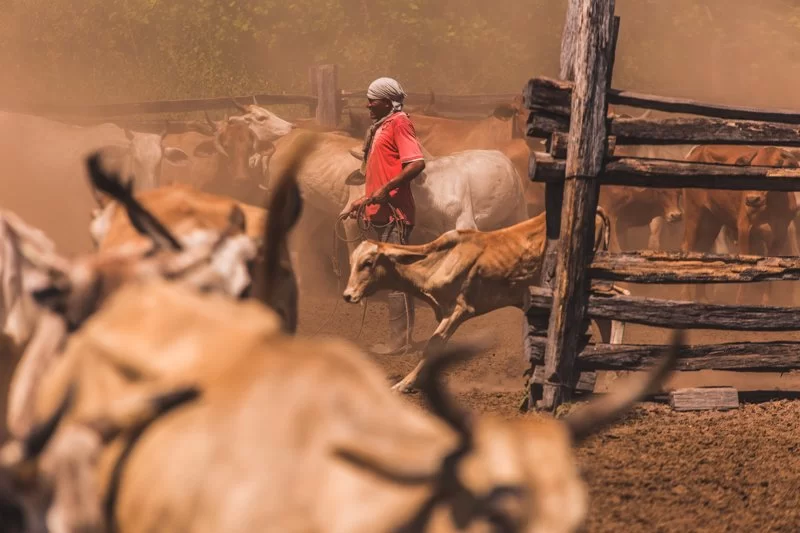
The reality of Ranch Life
Branding has been shown in studies to cause cows stress and pain. However, every report on branding doesn’t outlaw it but notes that in some cases, such as common grazing areas, branding is the method that makes the most sense. The reports also note that much of the stress of branding comes from the animal being restrained, something that has to be done to tag them also. I’m not saying here that ear tags are as painful as branding, but rather that they aren’t completely pain or stress-free. In the last few years we’ve been seeing people become more aware of animal welfare, often opting to pay more for “ethical” or “free-range” meats. What’s worrying about this is that in the US, there are no specifications for what free-range means when it comes to beef production and are only now finalising how to defineOrganic beef has to be hormone and antibiotic free according to USDA rules but there is nothing to say that they have to have access to the outdoors.

Land of the Free
Since Saddle Mountain Ranch is so far away from the outside world that the same reason they can’t use ear tags means they also can’t use hormones or additives. It also limits their use of grain or feed for the herd, resulting in the most natural life for the livestockBranding does cause pain, there are multiple studies that show the discomfort of the cows, and nearly all boards responsible for agriculture agree that if it can be avoided, it should be. In the case of a remote ranch, in what is a poor country, the resources aren’t there for it, so branding is the most viable option. However, it’s important to remember that the cattle are only brought into the corral every few weeks. They do this mainly to check up on the health of the herd and to clean any wounds they may have suffered by being out in the open savannah. These cows are given more freedom than even the most free of free-range animals at home. For days and weeks, they roam the land, eating grass and moving along. The fact that they have such a vast area to move also protects the delicate flora of the area. In a country as covered in untouched savannah and rainforest, this has to be seen as a good thing. With the destruction of the rainforest on the increase in Guyana, natural ranches like this one offer an alternative to deforestation for corn fields. The images of cattle being lassoed and branded are emotive and look harsh, but the effects of mass farming and deforestation are worse. Branding isn’t ideal by any stretch of the imagination, but for now it’s the best option for ranching deep in the Guyanese Rupununi.
These cows are given more freedom than even the most free of free-range animals at home. For days and weeks, they roam the land, eating grass and moving along. The fact that they have such a vast area to move also protects the delicate flora of the area. In a country as covered in untouched savannah and rainforest, this has to be seen as a good thing. With the destruction of the rainforest on the increase in Guyana, natural ranches like this one offer an alternative to deforestation for corn fields. The images of cattle being lassoed and branded are emotive and look harsh, but the effects of mass farming and deforestation are worse. Branding isn’t ideal by any stretch of the imagination, but for now it’s the best option for ranching deep in the Guyanese Rupununi. 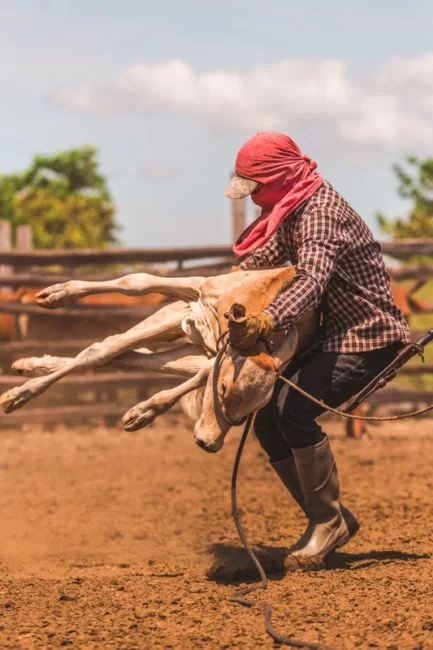
Special thanks to the Tourism Board of Guyana for inviting Conor to Guyana to experience ranch life.
